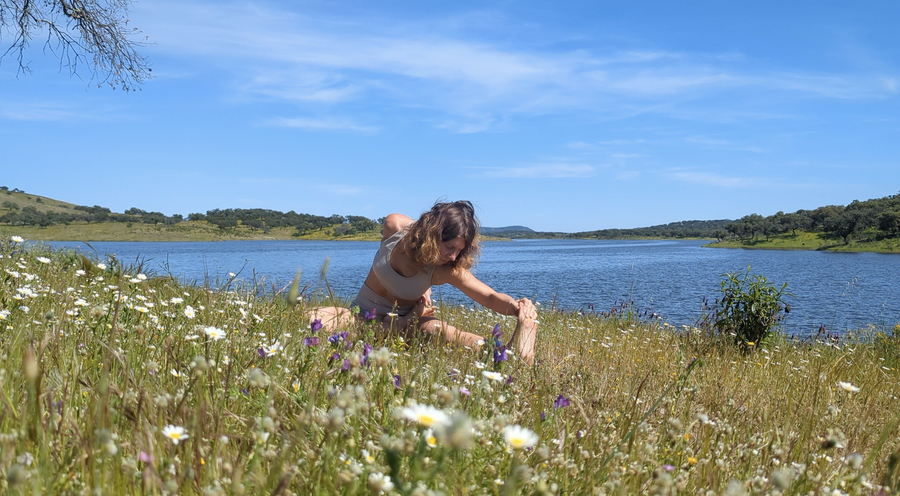You’d think meditating in nature would be effortless — birdsong, soft light, the perfect breeze. But anyone who’s actually tried knows the truth: a sudden bark in the distance, wind tugging at your clothes, insects buzzing right in your ear… and suddenly your mind is anything but serene. But this is the real magic of nature meditation: learning to stay present not because it’s quiet, but because you’ve learned how to soften into whatever the moment brings.
Being outdoors opens you to something bigger — forests, beaches, mountains, grasslands. But nature is alive, noisy, unpredictable. Mindfulness here isn’t always peaceful… yet it can be profoundly grounding.

how to meditate in noisy natural environments
Noise doesn’t have to break your meditation — it can become part of it. Instead of resisting the environment, practice including it.
— use sounds as an anchor: label noises as “near,” “far,” or “neutral.”
— switch to a guided meditation or a slow breath count if your mind feels jumpy.
— sit with your back supported by a tree or rock to feel more contained.
— use earbuds or over-ear headphones with white noise if the environment is overwhelming.
using nature as a meditation tool
There’s a moment that happens when you sit still long enough in nature — the kind where the world doesn’t suddenly become quiet, but you become attuned. The breeze moves through the trees in slow, thoughtful waves, light drifts across the ground like it has nowhere else to be, and the sounds around you stop feeling like interruptions and start feeling like companions. The mind doesn’t empty; it settles. Not all at once, but in small, honest layers.
Nature teaches presence through rhythm and sensation. You can meditate with almost anything around you:
— watch the sway of branches
— listen to wind, water, or distant wildlife
— track the shifting sunlight on the ground
— trace the shape of a mountain or horizon line with your eyes
Let the environment guide you instead of distract you.
grounding practices in nature
You don’t practice grounding because you’re doing something “wrong.” You practice it because it deepens everything: your breath, your attention, your relationship with the moment in front of you. Nature becomes easier to receive. Presence becomes something you feel rather than chase.
Grounding practices are not about forcing stillness. They’re about remembering that your body knows how to arrive even when your mind is wandering. They help you drop from thinking into sensing, from analyzing into feeling. They’re the bridge between the outer landscape and your inner one — subtle, steady, and quietly transformative.
— feet on the earth: soil, sand, stone — instantly reconnects your body.
— sensory check-ins: notice 5 things you can see, 4 you can touch, 3 you can hear…
— slow walking meditation: feel the weight shift from heel to toe.
— touch a tree or rock: their steadiness becomes your anchor.
Meditation in nature isn’t about perfect stillness. It’s about noticing, softening, and letting the landscape hold you. A forest path, a quiet lake shore, a breezy hilltop — all of them can become places to come back to yourself, no retreat center required.
meditative flow
Meditation in nature doesn’t have to mean sitting perfectly still. In fact, the body often settles more easily when it’s allowed small, intuitive movements that match the landscape around you. Think of it as a moving conversation with your own breath. On an inhale, you might let your arms rise slowly — like gathering light. On the exhale, you lower them with soft hands, a quiet gesture of letting go.
You can open your arms wide to the sides, letting your chest expand toward the wind, then round gently forward on the exhale, palms toward the earth, inviting a sense of inwardness. Practices like this exist across yoga and breathwork — gentle “breath-led” movement, sometimes called meditative flow — and they help connect the inner rhythm of your body with the outer rhythm of the natural world.

